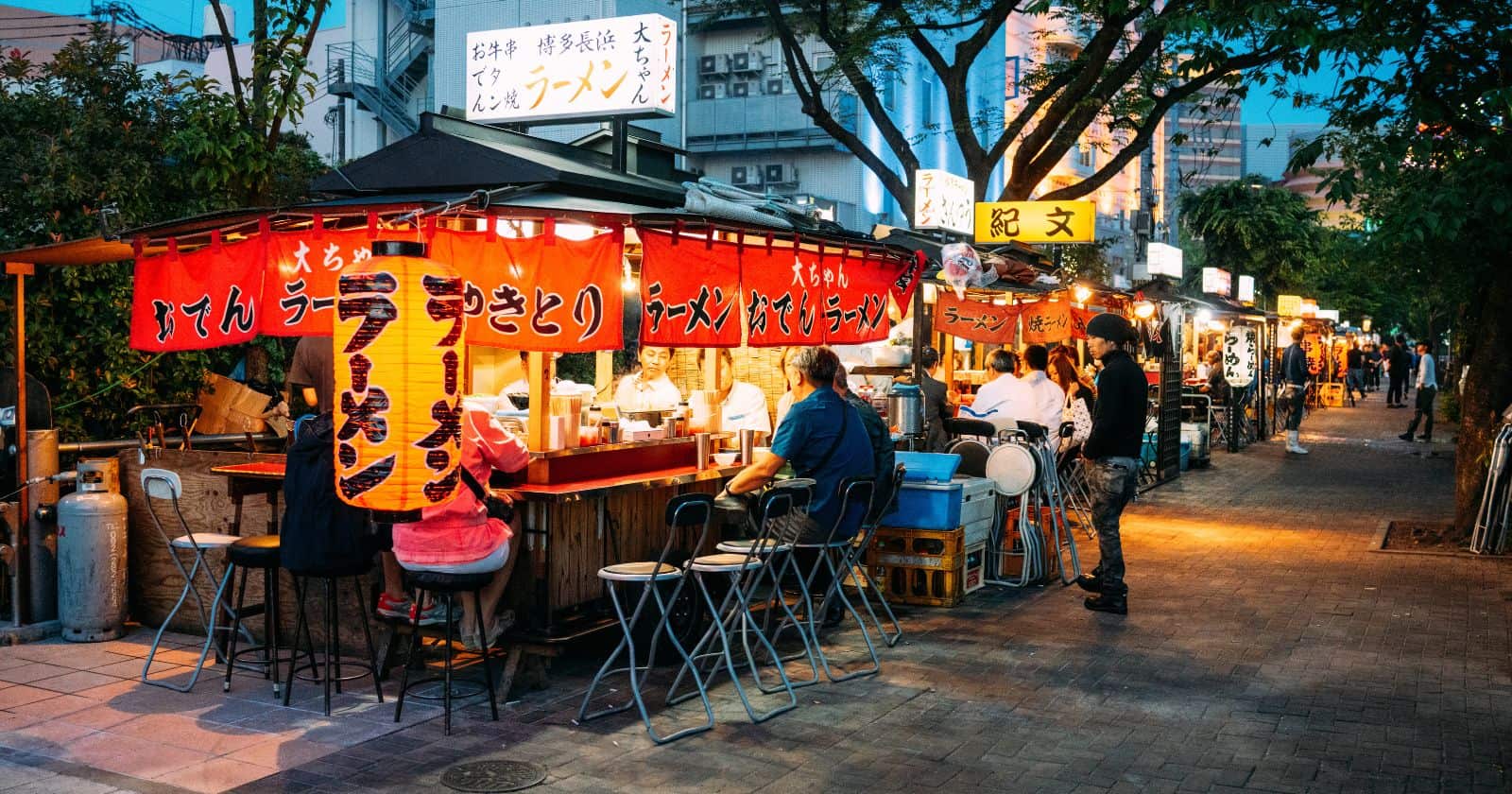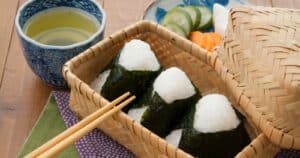Wondering how much Japanese street food will cost you? Prepare to be pleasantly surprised! With prices ranging from as low as 200 yen (about $1.80 USD) for taiyaki to 800 yen (about $7.20 USD) for curry dishes in Tokyo, Japanese street food caters to a variety of budgets. Whether you’re craving a quick and affordable rice bowl or eager to savor the flavors of a bento box, there are options available for everyone.
Understanding the Cost Factors of Japanese Street Food
Japanese street food offers a delicious and affordable way to experience the country’s cuisine. Here are some key factors that can affect the cost of Japanese street food:
- Location: The cost of food in Japan can vary depending on the region. Eating out in major cities like Tokyo and Osaka may be more expensive compared to smaller cities or rural areas.
- Type of Cuisine: Different types of street food in Japan come at varying prices. While some dishes like onigiri (rice balls) and pastries are more affordable, others like sushi and high-quality ramen may be slightly pricier.
- Quality and Experience: Japan is known for its high-quality food, and this is reflected in the cost. Splurging on a special meal or trying out regional delicacies can offer a memorable culinary experience, even if it means spending a bit more.
Here is a breakdown of sample food prices in Japan:
- Onigiri (rice ball) at a conbini: ¥200
- Pastry at a bakery: ¥400
- Bowl of soba or udon noodles: ¥600
- Bowl of ramen: ¥1,000
- Lunch set (teishoku), with fish, miso soup, rice, tea, and pickled vegetables: ¥1,200
- Inexpensive sushi meal: ¥2,500
- Dinner and drinks at a good izakaya: ¥6,000
Tokyo, in particular, offers a variety of affordable street snacks that cost less than 500 yen. By exploring the city’s food stalls and local markets, travelers can enjoy delicious street food without breaking the bank.
Popular Japanese Street Food and Their Price Range
Japanese street food is known for its delicious flavors and affordable prices. Here are some popular street food items in Japan and their price ranges:
- Taiyaki: This fish-shaped waffle pancake is a favorite street food across Japan. It typically costs around JPY200 (1.80 USD) or less.
- Okonomiyaki: A savory pancake that originated in Osaka, okonomiyaki is a must-try street food. Prices for this dish usually range from 500 to 1,000 JPY (4.60 to 9.25 USD).
- Takoyaki: Another popular Osaka street food, takoyaki is a ball-shaped snack filled with diced octopus and other ingredients. You can find takoyaki for around 500 to 1,000 JPY (4.60 to 9.25 USD).
- Ramen, Soba, and Udon: These classic Japanese noodle dishes are commonly found in vending machine restaurants and street shops. Prices can vary but typically range from 500 to 1,000 JPY (4.60 to 9.25 USD).
- Negiyaki: Similar to okonomiyaki, negiyaki is a savory pancake filled with green onion. The average price for negiyaki is around 1,000 to 2,000 JPY (9 to 18.50 USD).
- Kushikatsu: This deep-fried skewer of meat, seafood, or vegetables coated in panko is a popular accompaniment to beer in izakaya restaurants. The price for kushikatsu can vary depending on the ingredients, but it is typically around 80 to 200 JPY per skewer (1 to 2 USD).
- Rice Bowls: If you’re looking for an affordable meal, rice bowls are a great option. Places like Yoshinoya, Matsuya, and Sukiya offer rice bowls for only 300-400 yen.
- Street Snacks: Train station bento box shops and street vendors offer a variety of street snacks like okonomiyaki, takoyaki, and taiyaki. These snacks generally range from 500 to 1,000 JPY (4.60 to 9.25 USD).
Please note that prices may vary depending on the location and type of food. It’s always a good idea to research specific places and menus to get a better idea of prices.
Factors Influencing Price Variations Across Different Regions in Japan
The cost of food in Japan can vary across different regions due to several factors. Here are some key points to consider:
- Regional Differences: The cost of food in Japan can vary depending on the region. Factors such as local economies, supply chains, and availability of resources can influence price variations. For example, in more metropolitan areas like Tokyo, prices may be higher due to higher demand and operating costs.
- Geography and Import Costs: Japan’s mountainous terrain and limited arable land mean that a significant portion of its food needs to be imported. The cost of importing food, including transportation and tariffs, can contribute to price differences across regions. Remote areas may face higher prices due to logistical challenges.
- Economic Factors: The overall economic conditions of a region can also impact food prices. Factors like inflation, currency exchange rates, and local production can influence the cost of ingredients and the final price of food.
- COVID-19 Pandemic: The COVID-19 pandemic has had a significant impact on the food industry in Japan. The decrease in consumption, closures of restaurants, and disruptions in supply chains have affected pricing dynamics. Some regions may have experienced more severe impacts, leading to price variations.
It’s important to note that while the cost of food in Japan can vary across regions, there are often affordable options available, especially in areas like Tokyo. Additionally, the quality of food in Japan is generally high, making it a worthwhile experience to try different cuisines and local specialties.
Value for Money: Exploring the Quality and Portion Sizes
In Japan, portion sizes are generally smaller compared to other countries as they emphasize appreciating the high-quality seasonal ingredients. While the cost of food can vary depending on factors like region, cuisine type, and restaurant, there are affordable options available if you know where to go. Japanese street food in Tokyo, for instance, offers snacks below 500 yen, providing excellent value for money.
Despite smaller portion sizes, the quality of food in Japan remains high. Travelers can find affordable street snacks in Tokyo that offer a delightful culinary experience. By exploring these options, visitors can not only enjoy the exceptional taste of Japanese cuisine but also get value for their money.
Budget Tips for Enjoying Japanese Street Food
Japan is renowned for its delicious street food, and the good news is that you can enjoy it on a budget. Whether you’re exploring Tokyo or local markets, here are some tips to help you indulge in Japanese street food without breaking the bank.
- Tokyo’s Affordable Snacks: Tokyo offers a range of affordable street snacks that won’t burn a hole in your pocket. Treat yourself to delicacies like Mitarashi Dango, a skewered sweet dumpling, or Menchi Katsu, a breaded and deep-fried ground meat cutlet. These snacks typically cost less than 500 yen, allowing you to sample various flavors without stretching your budget.
- Diverse Street Food Culture: Japan’s street food scene is incredibly diverse, offering a multitude of options to satisfy your taste buds. From popular choices like ramen, takoyaki, okonomiyaki, yakitori, tonkatsu, gyoza, and udon, to lesser-known regional specialties, there’s something for everyone. Exploring the vibrant street food culture will not only provide a memorable culinary experience but also allow you to find affordable options to fit your budget.
- Local Market Delights: If you want an authentic taste of Japanese street food while sticking to a budget, head to local markets. Nishiki and Kuromon markets are two excellent examples, where you’ll find a plethora of street food stalls offering a wide range of cuisines and flavors unique to the local people. These markets offer a diverse array of affordable street food options, so you can immerse yourself in the local food culture without overspending.
In addition to these tips, there are other ways to enjoy Japanese street food on a budget. Cheap sushi restaurants or izakayas are great options, where you can savor delicious and budget-friendly dishes. Lunch sets, known as teishoku, are also worth exploring. These meals typically include fish, miso soup, rice, tea, and pickled vegetables, offering a filling and affordable dining experience.
Moreover, keep an eye out for food deals and discounts. Many establishments offer lunchtime specials or happy hour deals, making it easier to enjoy Japanese street food without breaking your budget.
Comparing Prices: Japanese Street Food vs. Restaurant Dining
Japanese street food is generally cheaper than dining at a restaurant in Japan, with street food prices ranging from 200 to 500 yen, while a regular restaurant meal might cost around 1,000 yen. Convenience stores like Family Mart and Lawson also offer meals at around 600 yen for lunch and 1,000 yen for dinner. However, it’s important to note that the quality of food in Japan is high, so splurging on special meals at restaurants is worth considering, even if they cost a bit more.
When it comes to the cost of food in Japan, there are several factors to consider. First, the region plays a role in determining prices, with certain areas having higher or lower costs. The type of cuisine also impacts prices, as some dishes may be more expensive due to the ingredients used. Additionally, the restaurant itself can influence the cost, with more upscale establishments generally charging higher prices.
It’s worth noting that the overall cost of food in Japan tends to be higher than in Europe. This can be attributed to the high cost of imported ingredients and the limited land availability for domestic agriculture. Despite this, the quality and taste of Japanese food are highly regarded, making it a worthwhile culinary experience.
Hidden Costs to Consider: Accommodation and Travel Expenses
Accommodation and travel expenses are crucial factors to keep in mind when planning a trip to Japan. Here are some important details to consider:
Accommodation Costs:
- The cost of accommodation in Japan varies based on the type of lodging and its location.
- Budget hotels or hostels usually range from $50 to $100 USD per night, while mid-range hotels cost around $100 to $200 USD per night.
- Luxury hotels and traditional ryokans can be quite expensive, with prices starting from $500 USD per night.
- Hostels in Japan offer affordable accommodation options, costing between ¥2,000 to ¥3,500 per night and are available throughout the country.
- Apartment rentals provide another budget-friendly alternative, with prices ranging from $130 to $180 per night.
Travel Expenses:
- While Japan boasts excellent public transportation, it can be expensive.
- Trains are the fastest and most cost-effective means of travel within the country, and obtaining a Japan Rail Pass can save you money, especially for longer stays.
- However, keep in mind that the cost of transportation should be factored in when planning your overall travel budget.
Hidden Costs:
- Although the cost of accommodation and travel in Japan may appear high, travelers are often pleasantly surprised by how reasonable prices are for sightseeing, food, and shopping.
- It’s essential to allocate a portion of your budget for exploring attractions, trying local cuisine, and indulging in shopping sprees.





